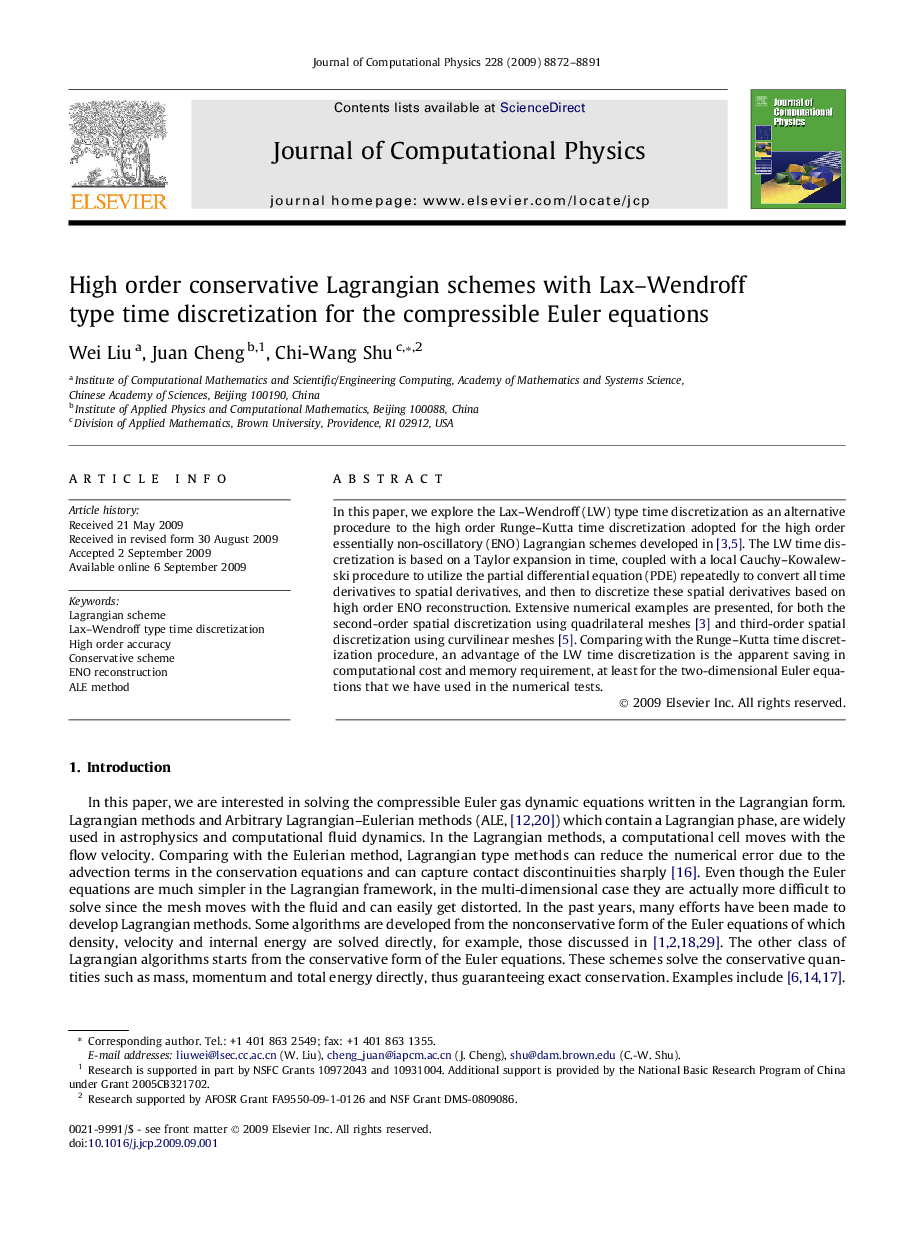| Article ID | Journal | Published Year | Pages | File Type |
|---|---|---|---|---|
| 522662 | Journal of Computational Physics | 2009 | 20 Pages |
In this paper, we explore the Lax–Wendroff (LW) type time discretization as an alternative procedure to the high order Runge–Kutta time discretization adopted for the high order essentially non-oscillatory (ENO) Lagrangian schemes developed in [3] and [5]. The LW time discretization is based on a Taylor expansion in time, coupled with a local Cauchy–Kowalewski procedure to utilize the partial differential equation (PDE) repeatedly to convert all time derivatives to spatial derivatives, and then to discretize these spatial derivatives based on high order ENO reconstruction. Extensive numerical examples are presented, for both the second-order spatial discretization using quadrilateral meshes [3] and third-order spatial discretization using curvilinear meshes [5]. Comparing with the Runge–Kutta time discretization procedure, an advantage of the LW time discretization is the apparent saving in computational cost and memory requirement, at least for the two-dimensional Euler equations that we have used in the numerical tests.
